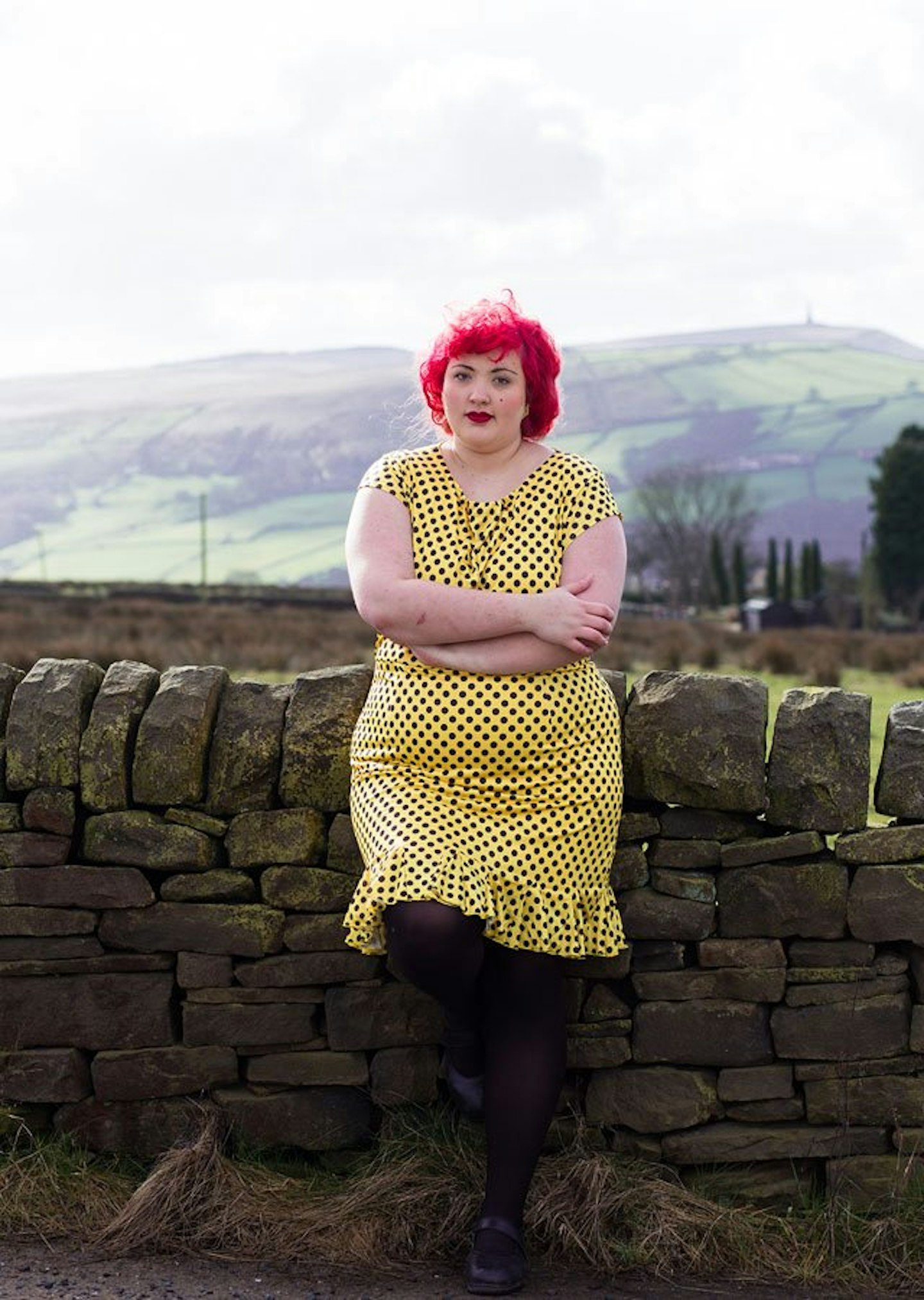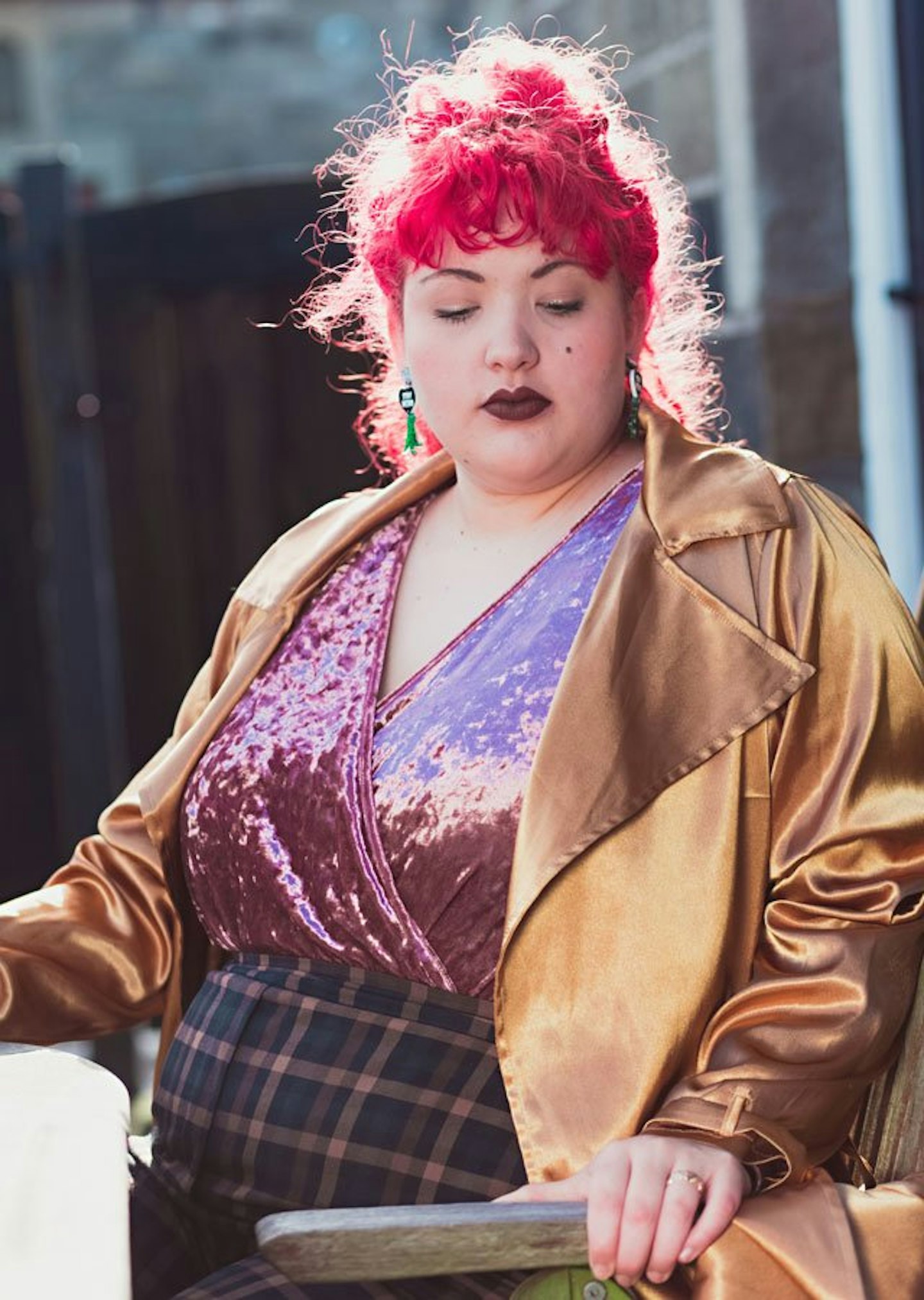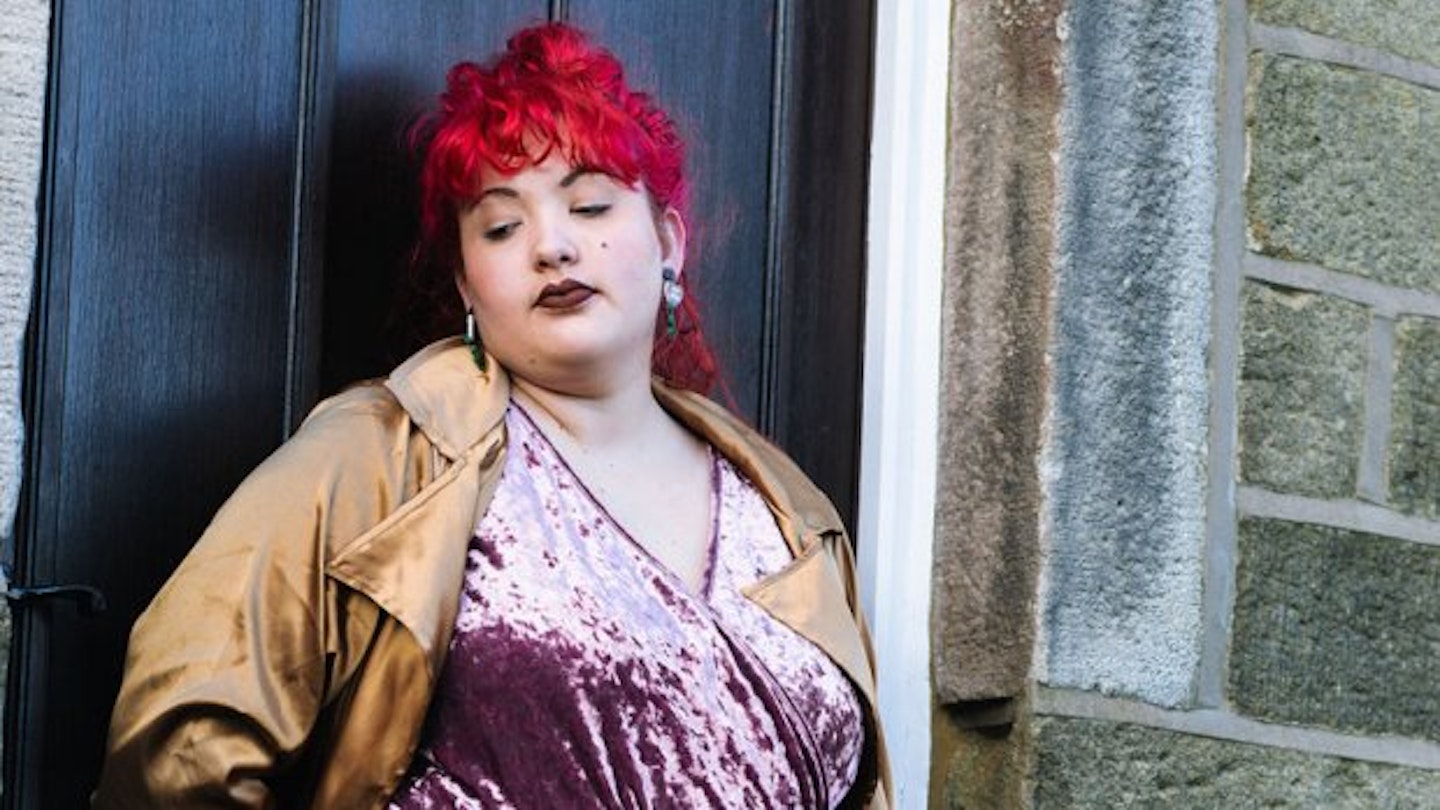From the weather, to the architecture, to how people dress, West Yorkshire is a beautiful but grey place. Most folks stick to earthy tones. Most folks also seem to notice when a big girl is wearing something equally big. And, I’m walking down the street in a bright yellow, polka dotted dress that clings to my muffin top. Fiery lipstick matches my poppy red hair, so there’s absolutely no chance that my already fat, visible self won’t be spotted.

As I got dressed to leave the house that morning, I made the conscious decision to present loudly from head-to-toe. But not before I stopped to consider that since Brexit, since Trump, since the world has gone so far-right, people have started asking me whether I will continue to pay such attention and care to fashion and beauty. ‘Surely now is the time to start focusing on less trivial matters,’ they’ve snarked.
Fashion and beauty have long been considered vapid, but I don’t agree. They are only shallow if you believe that self-expression and identity politics are much the same. Because, at the end of the day, these are the reasons so many people utilise them both.
As a fat woman, clothes and grooming are my weapons. For over 20 years of my life, they weren’t really accessible to me. Before the fatkini revolution, before plus size blogging, before indie e-commerce sites, getting one’s hands on inspiring, or bold, or experimental fashion was near impossible for me. It’s still difficult AF. And, it’s still largely limited to online shops. Even then it’s only available if you’re smaller than a (UK) size 28. But it’s also better than it’s ever been.
Fatphobia and size discrimination are sociocultural problems. They affect people’s access to healthcare, and paychecks, and likelihood to be heckled, belittled, and mocked simply for existing. Fat people are still regularly told that their utmost duty to the universe is to shrink, to be as invisible as possible in voice, in personality, and in aesthetic just because they have a body that is far too visible.
And so we are handed down the ‘rules’ of dressing. Don’t wear horizontal stripes. Don’t rock a body-hugging dress. No one wants to see those rolls. But don’t wear a tent either. You don’t want folks to think you’re even bigger. Ignore bright colours, while you’re at it. Don’t pick anything ‘too girly.’ Femininity is not for you. But don’t wear anything too androgynous or masculine. You need to make up for your fatness by presenting hyper-femininely. And never put on miniskirts, fishnet tights, low-rise anything, one-piece swimwear that isn’t skirted, no bold patterns, crop tops or booty shorts.
A world that still insists on handing out these pseudo-guidelines makes fat people feel less human. So, my decision to radicalise my wardrobe is a political statement.
Fat-shaming might seem like one of the least pressing forms of marginalisation to combat in times as politically troubling as these. But, when you consider its myriad intersections with gender, race, sexuality, and class, it’s certainly not something that can or should be shoved under the rug entirely. And one way to combat it is to be undeniably visible and unapologetic about that.
To radicalise my own wardrobe, I first began by isolating the alleged rules for my body that most troubled me stylistically. I have always loved bright colours. Equally, I enjoy body-hugging silhouettes that wrap tightly around my 55-inch hips, and thunder thighs, and back boobs, and jiggly middle. Fishnet tights are totally my jam, even when my leg fat squishes into the tiny little holes. Perhaps, especially then. And miniskirts? Well, I love all varieties of them.
For too long, I rejected these looks because I had so been conditioned to believe that they were not ‘for me.’ They were styles that you ‘earned’ by ‘working on your body.’ They were reserved for stone cold foxes who more closely resembled the latest Vogue cover star.
Until I realised that these rules hold no purpose, besides further othering entire groups of people. They only help fuel harmful rhetoric surrounding diet culture and a woman’s so-called need to be as small and submissive as possible. Until I realised life is too damn short to waste it by catering to someone else’s definition of beauty or worth. And, that the only problem with my fat body is that other people have a problem with it. Until I realised that I don’t need to cater to their intolerance.

So I started wearing all the clothes. I took to my closet and figured out what was in there because I thought it ‘had’ to be versus what was in there because it genuinely caused me joy. I got rid of the former while actively working towards accumulating more of the latter. Eventually, that same closet was rainbow-coloured and sparkly, animal-printed and radical in its ability to help me stop apologising for taking up space in the world. I also recently dyed my hair bright red and stopped caring who was staring and who was judging.
I’m not here to tell you to get rid of all your beloved basics in favour of an entire wardrobe made of sequins (although that would be rad, too). But I am here to tell you that fashion can be empowering when used on your own terms. And, that throwing out all those ‘rules for your body’ and adorning your fatness in whatever you want is a radical act.
I cannot, however, guarantee that you won’t attract attention. You are risking potential heckling (although you’re at risk of that anyway, given that you exist in a plus size body). You are risking giggles and snarky remarks from passerby. You are risking insult on the grounds of being fat and not actively striving to hide it.
But if you try to remain certain in yourself — confident in the knowledge that you are not doing anything wrong (quite the opposite, in fact) — you are also confronting people with their BS prejudices. Whether you choose to smile at the haters to make them uncomfortable, ask them what it is they find so disconcerting about you, or ignore them altogether is entirely your call. But the surer you are that you deserve to wear those clothes and that you deserve to live a full life, the less anyone else’s words are likely to sting. They probably won’t stop stinging altogether. But hopefully, the sting will become more about your frustrations at ingrained fat-antagonism and less about feeling personally attacked.
As for the biggest perk of all, well, that lies in your radical wardrobe’s potential to inspire others. For me, it took seeing fellow fatshion bloggers, activists, and artists in loud outfits to believe that I could present similarly. So when you step out into the world in your neon pantsuit, you might just help convince another plus-size babe out there that they have always been worthy, that they have always been lovely, and that they have always possessed radicalness within themselves, too. Ultimately, anything that helps create more happy fatties into the world will always be worth doing.

Like this? Then you might be interested in...
Is The Popularity Of The Body Positivity Movement Its Ultimate Downfall?
**Wonder Woman Finally Has Her Own Film And It Only Took 75 Years **
This article originally appeared on The Debrief.
